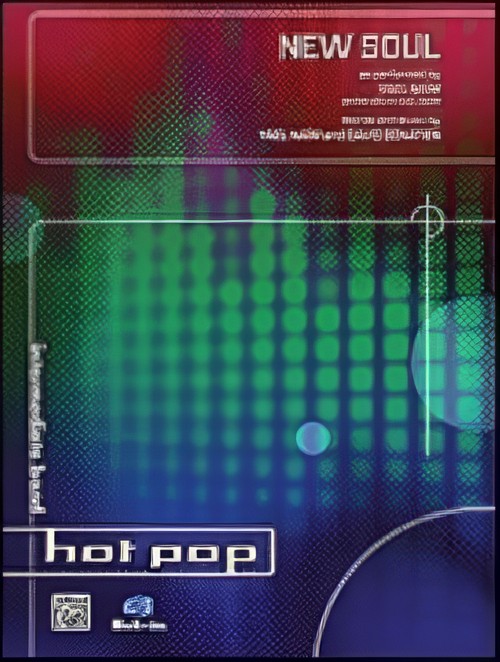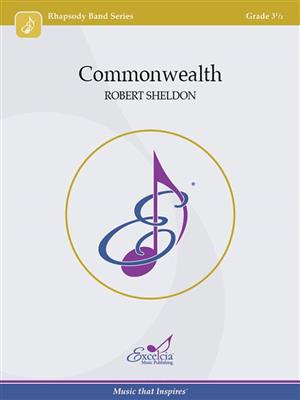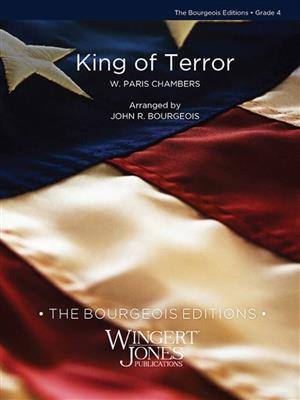Results
-
 £45.95
£45.95NEW SOUL (Concert Band) - Donatien & Naim
Quite the rage globally, this charismatic tune is all over the airwaves ... even used domestically in a prominent television commercial. From the Yael Na?m compact disk, New Soul seems almost familiar, but it's actually brand new. Your brass and woodwind players take turns sharing the upbeat melody with a solid pulse as the foundation. Right off the airwaves ... it's fresh, tuneful and--most of all--great fun!
Estimated dispatch 7-14 working days
-
 £179.99
£179.99Outback (Concert Band - Score and Parts)
This work was commissioned by the "?sterreichische Blasmusikjugend" (Austrian Brass Band Association - Young Musicians).The Aboriginal indigenous people of Australia are among the oldest surviving human cultures. The arrival of the Europeans marked their decline and endangered their existence. The many secrets the Aborigines hold served as inspiration for this work. Aboriginal SpiritOver many centuries, the Aboriginal people have cultivated a unique ability to live in harmony with the world around them. Maintaining the deli?cate balance between their trinity - nature, man, and creation - is an important factor for bliss and happiness.Primeval Sound and Dreamtime The tens of thousands-year-old stories from the era called Dreamtime - the Aborigines' creation myth - play an important role in not only their be?liefs, but their everyday lives and laws as well. Ancestral worship and various other rituals and ceremonies are still held in high regard to this very day.Running HunterThe Aborigines are extremely skilful hunters and are able to run for extended periods of time when chasing their prey. Hunting weapons, such as the boomerang, exemplify their abilities.Uluru (Red Rock)Uluru, also known as Ayers Rock, is a natural sandstone "inselberg" rising 348m above Australia's plains, and is one of the country's most recognisable icons. Uluru is also a sacred place for the local Aborigines. Its history stretches back to Dreamtime, although it did not exist in its current state at that time.Encounter with the White MenUnfortunately, the "White Men" did not realize the significance and importance of the Aborigines and their culture until the end of the 20th century. Before then, they were unaware that the Aborigines were quite possibly one of the oldest known cultures on earth, with a seamless history stretching back to creation itself; Dreamtime. BushfireFire has been present on the Australian continent for millions of years. Many of the indigenous flora and fauna have needed to adapt to fire, and evolution has led to unique solutions for survival. Over time, a complex symbiotic relationship has grown between life and the continually returning bushfire. 11:55
Estimated dispatch 7-14 working days
-
 £87.99
£87.99Commonwealth - Robert Sheldon
Located in the Commonwealth of Virginia, Fairfax County has quite an interesting story to tell, from the times of the Revolutionary War to the Civil War, to its prominent position as one of the premiere suburbs of our nation's capital, and most populous jurisdiction in Virginia. This piece serves to acknowledge the history of this region while representing its vibrancy and character. The opening patriotic soundscape offers a backdrop to the energetic piece that follows. A juxtaposition of those themes brings the piece to a close.
Estimated dispatch 7-14 working days
-
 £209.99
£209.99Dunamis - André Waignein
Major Yvon Ducene wanted a new lush and colourful composition for his Guides military band, with Andr Waignein as its composer. Early in 1979 the composer began his assignement and in October of the same year, the finished full score was on the music stands of this prestigious military band of the Belgian Army.The introduction (Grave) mirrors an atmosphere full of serenity in which the theme, played by the oboes and the English horn is predominant and immediately holds the listener spell-bound. It is taken up again as central element of the slow movement.The Allegro breaks away from the quiet passion of the introduction. Here, the band can really show its capabilities to thefull. Based on a very precise rythm, an idiom of sudden desperation and adversity develops which, fused with a crushing agression, culminates in a kind of eruption, soom calmed down by a Lento : peace and quiet has returned thanks to a melody by the horns and soon taken over by the clarinets. In the meantime, the saxophone - an instrument full of human emotion - express the main spatial dimension in contemporary psyche. Following a harmonic transition the brass-players take up the theme again in forte whilst the basses and the woodwinds interwine in technical arabesques.The movings of the mind and the heart get an audible and almost touchable shape in the ensuing Allegro, a movement characterized by a rhythmic dialogue in which the whole orchestra participates and where the exposition contains a wealth of sound and technical contrasts. The Lento finally uses the central theme of the slow movement again, with some occasional references to the two allegros. The last page is of unprecedented grandeur. All the instruments display their most beautiful sound which were named by Jacques Ferschotte, when speaking about Honneger, "harmonies d'intensits" harmonies of the unmeasurable.
Estimated dispatch 7-14 working days
-
£150.00
Symphony Fantastique - Hector Berlioz
Berlioz's most famous Romantic Era standard, "Symphony Fantastique" is a colorful, evocative musical masterpiece that continues to withstand the test of time, pleasing all audiences. In this transcription, Evan VanDoren has artfully crafted its fourth movement, "March to the Scaffold", for the modern wind ensemble, taking creative care to present the work in its truest form while maximizing playability!
Estimated dispatch 7-14 working days
-
 £154.60
£154.60Oriental Dance - Wilhelm Peterson-Berger
Wilhelm Peterson-Berger (1867 1942), Swedish composer, beloved most of all for his collections of small piano pieces, Frsblomster 1 3 (Flowers from Frs). Peterson-Berger himself, primarily treasured his five symphonies and five operas, but todayit is mainly his songs and piano pieces which are performed. Besides composing he worked as a music critic at the daily paper Dagens Nyheter, and was feared by many for his sharp, sometimes almost vicious, pen.Peterson-Berger originallycomposed Oriental Dance for piano during his studies in Dresden in 1890, and immediately orchestrated the piece. It is one of his earliest pieces,somewhat of a bagatelle, admittedly, which mighthave found its inspiration in Griegs Peer Gyntsuite, yet it has a na ve charm which well compensates for its weakness. Oriental Dance was first performed by the Knstlerverein in Dresden in February, 1890.
Estimated dispatch 7-14 working days
-
 £104.50
£104.50King Of Terror - W. Paris Chambers
William Paris Chambers (November 1, 1854 - November 13, 1913) was an American composer, cornet soloist and bandmaster who wrote several cornet solos and nearly 90 marches. His most famous marches are Chicago Tribune, The Boys of the Old Brigade, Hostrausers, Northwind and Revelation. The King of Terror March was published by J.W. Pepper in 1882. Its title is thought to be inspired by a carnival or midway attraction. The march is fast and furious, with all the drama and ferocity thats reflected in its name. Although one of his earlier marches, King of Terror contains all of the characteristics of Chambers famous bravura band writing.
Estimated dispatch 7-14 working days
-
 £179.99
£179.99Outback - Thomas Doss
This work was commissioned by the "-sterreichische Blasmusikjugend" (Austrian Brass Band Association - Young Musicians).The Aboriginal indigenous people of Australia are among the oldest surviving human cultures. The arrival of the Europeans markedtheir decline and endangered their existence. The many secrets the Aborigines hold served as inspiration for this work. Aboriginal SpiritOver many centuries, the Aboriginal people have cultivated a unique ability to live in harmony with theworld around them. Maintaining the delicate balance between their trinity - nature, man, and creation - is an important factor for bliss and happiness.Primeval Sound and Dreamtime The tens of thousands-year-old stories from the era calledDreamtime - the Aborigines' creation myth - play an important role in not only their beliefs, but their everyday lives and laws as well. Ancestral worship and various other rituals and ceremonies are still held in high regard to this veryday.Running HunterThe Aborigines are extremely skilful hunters and are able to run for extended periods of time when chasing their prey. Hunting weapons, such as the boomerang, exemplify their abilities.Uluru (Red Rock)Uluru, also knownas Ayers Rock, is a natural sandstone "inselberg" rising 348m above Australia's plains, and is one of the country's most recognisable icons. Uluru is also a sacred place for the local Aborigines. Its history stretches back to Dreamtime, although itdid not exist in its current state at that time.Encounter with the White MenUnfortunately, the "White Men" did not realize the significance and importance of the Aborigines and their culture until the end of the 20th century. Before then, theywere unaware that the Aborigines were quite possibly one of the oldest known cultures on earth, with a seamless history stretching back to creation itself; Dreamtime. BushfireFire has been present on the Australian continent for millions ofyears. Many of the indigenous flora and fauna have needed to adapt to fire, and evolution has led to unique solutions for survival. Over time, a complex symbiotic relationship has grown between life and the continually returning bushfire.
Estimated dispatch 7-14 working days
-
£139.99
Daibutsu to Shika - Itaru Sakai
For 70 years during the 8th century the ancient city of Nara was the capital of Japan. The city is rich in national and cultural treasures, including shrines, Buddhist temples and statues of Buddha. The city is most famous for the Todai Temple with its 16 metre high Buddha dating from the year 752 and the Kasuga Shrine with its tame deer that walk around freely.
Estimated dispatch 7-14 working days
-
£29.95
I Vow to Thee, My Country - Score and Parts - Gustav Holst
Program NotesGustav Holst's orchestral suite The Planets is perhaps his best known and most popular composition. The them in the central section of the movement Jupiter was adapted by the composer himself to fit the words of the song and has subsequently found its way into use as a hymn tune under the title Thaxted (named after the Essex town where the composer lived).Ray Steadman-Allen's arrangement of the tune for brass band was published by The Salvation Army in 1998. That arrangement has now been transcribed for wind band by Brian Bowen. It can be effectively used as a stand-alone concert item or as a song accompaniment for either choir or audience.
Estimated dispatch 7-14 working days
